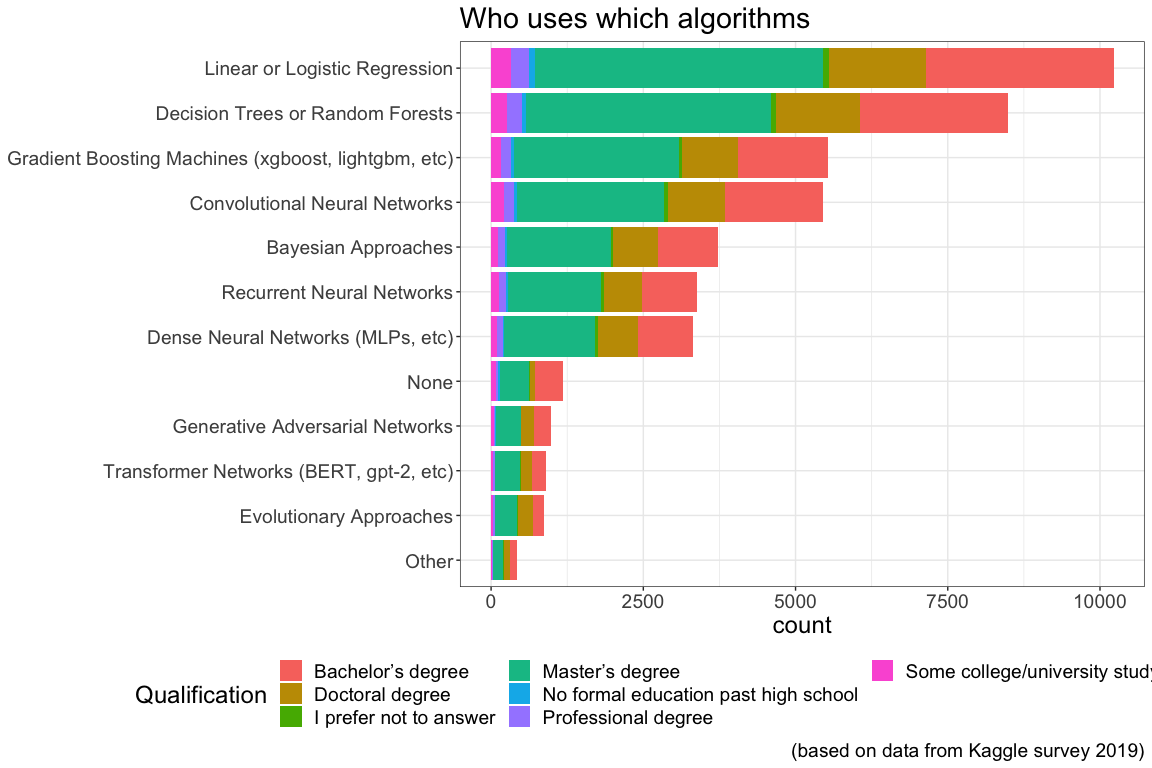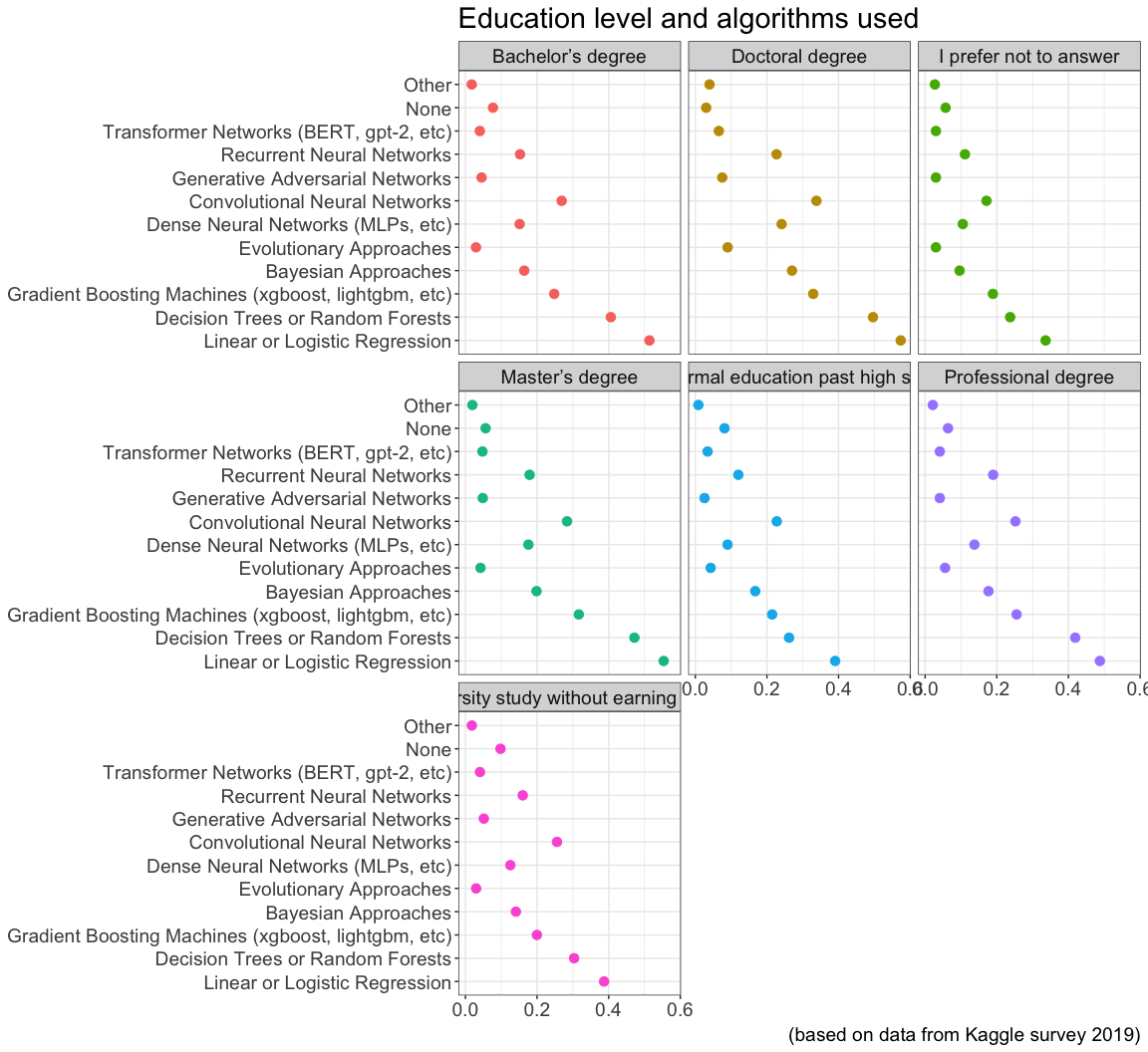Chapter 3 Who uses which algorithm
There are plenty of machine learning algorithms in use, some have been around for quite some time already, others are quite new. Especially in the field of neural networks there is plenty of research ongoing as can be seen by a search with the keywords “neural network” on the moderated but not peer reviewed electronic preprint plattform Arxiv.

The last Qualification which is cut off in the legend in the plot above reads “Some college/university study without earning a bachelor’s degree”
Splitting the graphs up for each category of education and plotting the percentage of usage for the given education level gives an insight into how the usage of algorithms differs over levels of education

The graph above shows that regression and tree-based algorithms are very popular
They are:
- Less computationally intensive than neural networks
- Available in the de facto standard machine learning library in Python, scikit-learn.
Below historical data to some the algorithms are given, together with links to the Wikipedia article on the algorithm.
- Linear regression
- Legendre, 1805
- Gauss, 1809
- Logistic regression
- Pierre Francois Verhulst, 1830s
- Random forest
- Ho, 1995
- Gradient boosting trees
- L. Breiman, 1997
- Convolutional neural networks
- Kunihiko Fukushima, 1980
- Recurrent neural networks
- David Rumelhart, 1986
- Dense neural networks
- Independently proposed by Alexander Bain, 1873 and William James, 1890
- Generative adversarial networks
- Goodfellow, 2010-2014